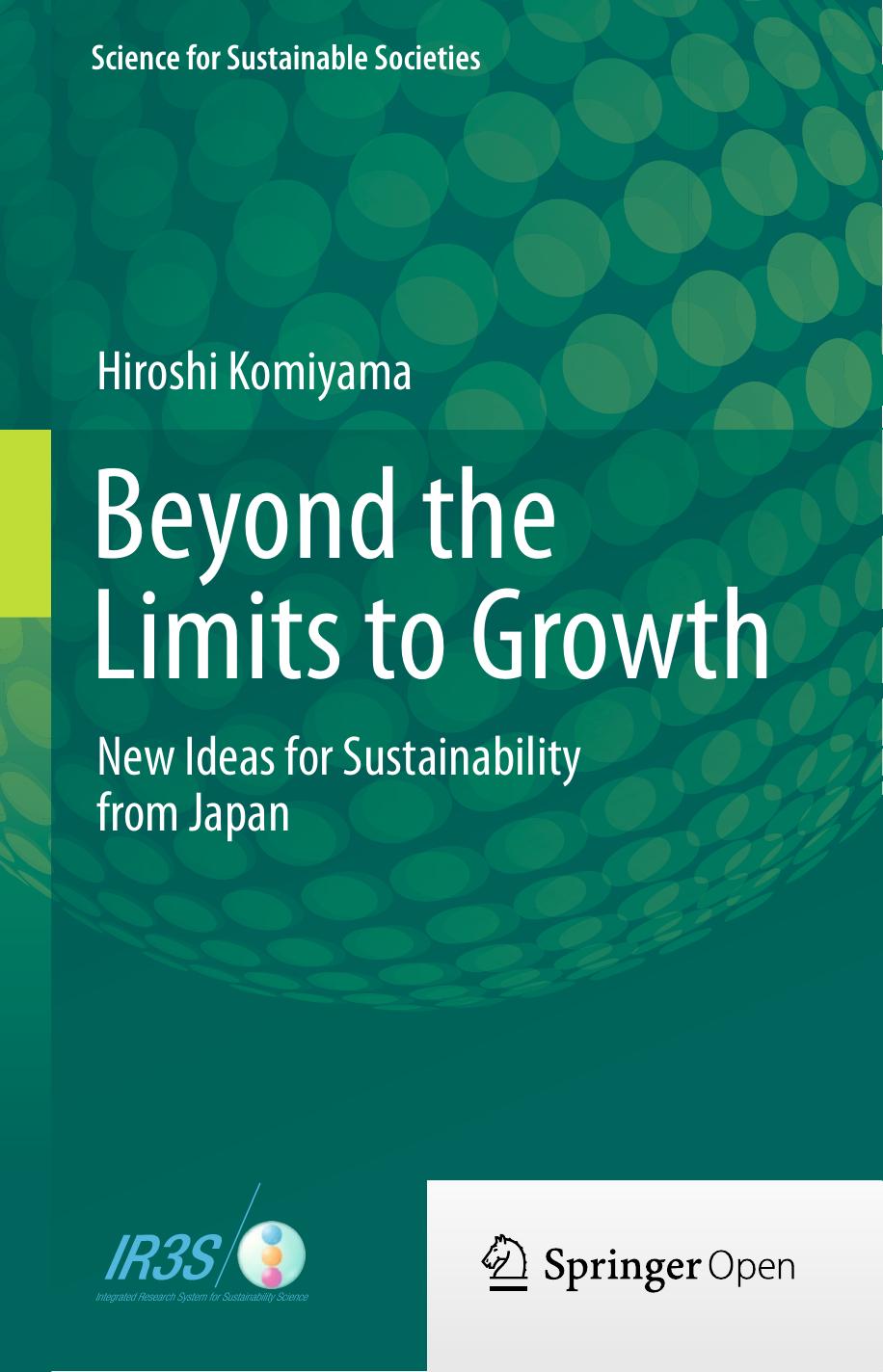Beyond the Limits to Growth by Hiroshi Komiyama

Author:Hiroshi Komiyama
Language: eng
Format: epub, pdf
Publisher: Springer Japan, Tokyo
Reducing the World’s Carbon Dioxide Emissions by 25 %
Let us look at “Vision 2050” from the standpoint of carbon dioxide emissions. Figure 3.3 shows world energy scenarios and the concentration of carbon dioxide in the year 2050 under each scenario.
Fig. 3.3Energy scenario and CO2 concentrations: (a) 1990, (b) 2050 BAU case, (c) vision 2050, and (d) after twenty-second century. Source: Komiyama H and Kraines (2008)
At the present time, owing to the use of fossil fuels, about 6 billion tons of carbon dioxide are generated per year. (Note that here and in the following, the mass is given in terms of the carbon content of the CO2. Because of the addition of oxygen to the carbon, the total mass of CO2 is 3.7 times the mass of the carbon.) The white portion corresponding to 1.5 billion tons is the amount covered by the non-fossil sources: nuclear, biomass, hydropower. If this energy were obtained by burning fossil fuels instead, an additional 1.5 billion tons of carbon dioxide would be generated. Currently, the 6 billion human beings living on the planet use this much energy (Komiyama 1999b).
Figure 3.3b shows a projection of what will happen in 2050 assuming that the world population grows to 9 billion, almost all countries become advanced nations, and present patterns of energy consumption continued unchanged. Here it is assumed that all nations will reach a level of energy consumption equivalent to today’s advanced countries (excluding the U.S.). Because this is the business-as-usual scenario, the use of renewable energy does not rise much, and the increase in energy consumption is almost entirely covered by fossil fuels. As a result, energy consumption triples, and carbon dioxide emissions in fact grow to 22 billion tons per year, much more than triple the current level.
This is the “breakdown” scenario. It is the scenario in which the carbon dioxide concentration in 2050 will reach approximately 600 ppm, and the Earth’s temperature compared to the pre-industrial revolution era will likely rise about three degrees.
If this happens, even looking from an energy resource perspective, even for coal (which is generally thought to have the largest reserves), depletion will start to become a reality. Therefore, the business-as-usual scenario is the same as a breakdown scenario, and in this sense the problem is that present-day humanity is headed for a breakdown.
Download
Beyond the Limits to Growth by Hiroshi Komiyama.pdf
This site does not store any files on its server. We only index and link to content provided by other sites. Please contact the content providers to delete copyright contents if any and email us, we'll remove relevant links or contents immediately.
International Integration of the Brazilian Economy by Elias C. Grivoyannis(57316)
The Radium Girls by Kate Moore(10907)
Turbulence by E. J. Noyes(7037)
Nudge - Improving Decisions about Health, Wealth, and Happiness by Thaler Sunstein(6633)
The Black Swan by Nassim Nicholas Taleb(6190)
Pioneering Portfolio Management by David F. Swensen(5605)
Rich Dad Poor Dad by Robert T. Kiyosaki(5147)
Zero to One by Peter Thiel(4823)
Man-made Catastrophes and Risk Information Concealment by Dmitry Chernov & Didier Sornette(4735)
Secrecy World by Jake Bernstein(3782)
Millionaire: The Philanderer, Gambler, and Duelist Who Invented Modern Finance by Janet Gleeson(3568)
Skin in the Game by Nassim Nicholas Taleb(3459)
The Age of Surveillance Capitalism by Shoshana Zuboff(3421)
The Money Culture by Michael Lewis(3284)
Skin in the Game: Hidden Asymmetries in Daily Life by Nassim Nicholas Taleb(3264)
Bullshit Jobs by David Graeber(3179)
The Dhandho Investor by Mohnish Pabrai(3167)
The Wisdom of Finance by Mihir Desai(3077)
Blockchain Basics by Daniel Drescher(2889)
